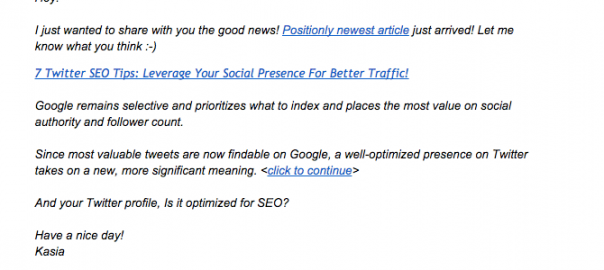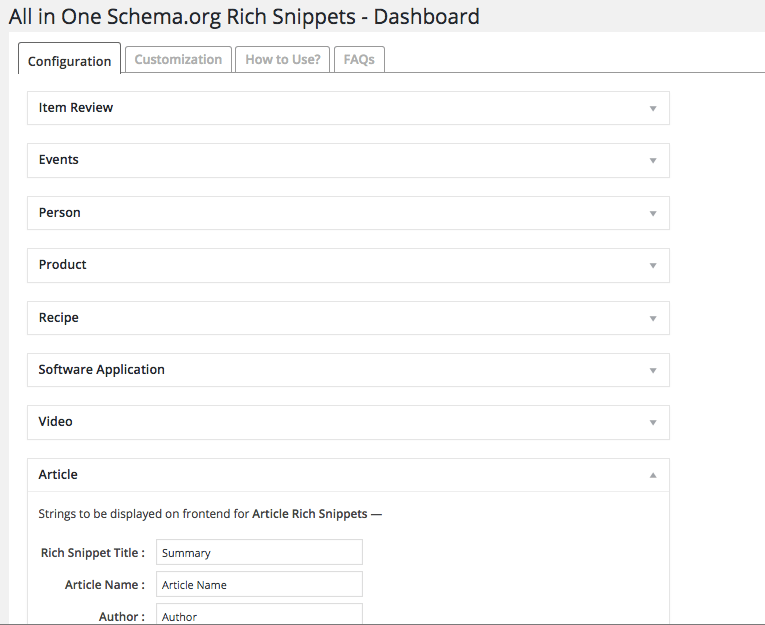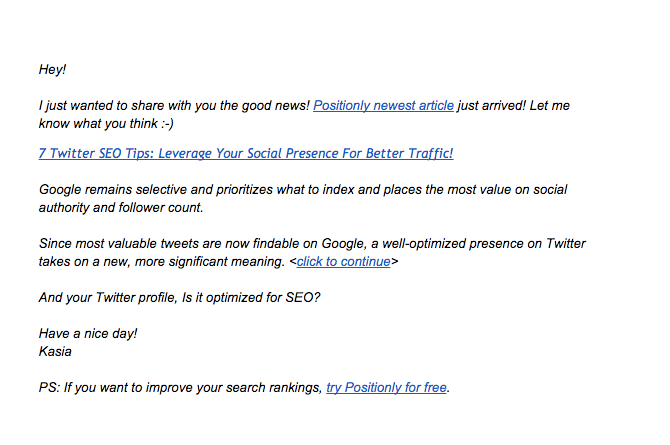It doesn’t matter what website you are dealing with, whether it is your own business or your client’s, you need a similar SEO strategy. Before you approach this task, the first step to take is to evaluate your assets. Begin by analyzing your challenge and creating a report of the site’s content, backlinks, search traffic, and rankings. Useful tools for a simple and quick audit are Positionly (for backlinks and rankings) and Google Analytics (for traffic). This will give you a foundation for designing an accurate strategy and deciding which SEO techniques need to be emphasized in the first place.
#1 Technique: Keywords Research
This part needs to be as simple as possible. Combine these tactics for optimal results:
- Prepare a list of your top 10 competitors and find keyword ideas for each domain using Google’s Keyword Planner. Then, download all the results into one spreadsheet.
- Get suggestions for your key keywords from tools. Take a look at the keywords that appear in Amazon, Wikipedia, Quora, and any related forums to understand how people use them.
- Gather a list of high volume phrases from Google Keyword Planner, then go to Term Explorer, Ubersuggest.org, or KeywordTool.io and add your results to a spreadsheet. Upload them into Google Keyword Planner in order to obtain data about their search volume and competition score. Download the list.
- Remove from the spreadsheet any keywords with fewer than 50 monthly searches and those with high competition. Remember that any misspelled keywords or phrases that don’t “make sense” are useless for your content creation. Therefore, you can also get rid of them.
Whoa! Here we go! Your keywords list is ready!
Once you are provided with the first results, you can easily assess which keywords need to be taken care of first. It is highly recommended to work on keywords ranking between 11-99 in SERPs first.
#2 Technique: Content Creation
When your keywords list is ready, we can go ahead and start with looking for hot topics to write about! How to find them? We can base them on social shares.
It has been shown that there is a positive correlation between links and shares, suggesting there are similar reasons for sharing and linking. Correlation does not imply causation, but if people share and link to content for similar reasons, you can rely on this method. That’s why you can confidently come up with hot topics based on Buzzsumo.
Buzzsumo homepage
Search for your broad keywords and look for relevant articles with high levels of social sharing.
Next, analyze the headlines and create two lists of useful phrases to include within your article. The first one should be a list of words strictly related to your broad keywords. The second list should include modifiers like “how to,” “must-have,” “top 10,” and any related keywords.
You can also try to get into the mindset of your audience by using forums, LinkedIn or Facebook groups, Reddit and Quora. This will help you understand their solutions for common problems, their attitude regarding some issues and popular terminology. This is going to give you a clear overview of ongoing trends and how to establish your voice and tone.
Pro-tip: It’s a good idea to keep these resource links in order to use them later for promoting. 🙂
Remember that the keywords should fit your content, never the reverse. You are targeting real people with real needs. Prepare an outline based on content research and then match the keywords with each particular section. Of course, only where it makes sense to do so. This way, your chance of ranking high increases because search engines will be able to find relationships within your content and index it for the desired search queries.
#3 Technique Headlines – How to optimize them both for SEO & CTR?
Apart from technical aspects like including your core keywords and keeping your title under 160 characters long, there’s another much more important concept to keep in mind. Your headlines must convert! Your headline must attract, engage, sell, evoke emotions, and shock! It’s best if these factors all happen at the same time. 😉
Andrew Chen recommends to test blog headlines on Twitter according to the formula:
- Tweet an insight or idea different ways multiple times.
- Measure how much engagement it brings.
- If it catches, then write a blog post elaborating on the topic.
According to Leo Widrich from Buffer, this is one of the most powerful ways to validate your blog post headlines and ideas and make sure you’re not wasting your precious time.
If Twitter isn’t your main social channel, you can always perform this experiment on Facebook.
Based on the study prepared by Orbi, the most actionable formula for crafting your title includes:
- Numbers – Place them at the beginning of the sentence; the bigger the number is, the better impact it makes. Include lists of items/ tips / reasons within your content because it sounds practical, easy to read and diverse to your readers.
- Guides – Remember that people want to get smarter which is why it is always a good idea to write “diy,”“how to,” “guide,” “introduction,” and “must-have” articles.
- Specific description – Always make sure that your headline explains to your readers what your article is about and presents the benefits your visitor may gain from reading your piece.
- Magic words – There is a list of general words which when used in your headline increase the chance of your article going viral. They are: smart, surprising, science, history, hacks (hacking, hackers, etc), huge/ big, and critical.
#4 Technique: Don’t forget about Rich Snippets
User signals play a crucial role as a ranking factor. The reaction of your readers tells Google everything about the quality of your content. That’s direct feedback about user satisfaction and a reason why you should equip your content with Structured Data Markup. It is an HTML way to give precise information about the website or content which you publish.
 Google Search Results for Pasta Restaurants in Rome
Google Search Results for Pasta Restaurants in Rome
Your content will be more eligible for search engines and our page will get richer results when enhanced with Rich Snippets. Also, you can include extra details like review stars, an aggregate rating value, and vote count. They’re useful for any searcher.
One Schema.org: Rich-Snippets Dashboard
If you work on WordPress, there is nothing easier than downloading Schema.org Plugin and adding structured data of the appropriate type to your content. Now it supports: Item Reviews, Events, Person, Product, Research, Software Application, Video & Article.
Finally, it looks like we are done with the content creation part! You’ve thought-up a hot topic, optimized for SEO, and included a catchy headline. It is time to publish it!
Successful marketers spend 20% of their time crafting content and 80% promoting it.
How do you promote your freshly baked piece of great and optimized content? There are some basic promotional techniques that you should leverage now:
#5 Technique: User Generated Content
Remember to answer all of the comments that appear below your article as quickly as possible. User generated content is a valuable asset because it increases your organic traffic, enables you to reach out to your audience on a more personal level and helps you gain social proof all at the same time.
#6 Technique: Diligent Web Monitoring – Alerts
Mention Homepage
Set up alerts for the main keywords of your article and monitor all of the news that comes. You can use, for instance, Google Alerts, Mention or Warble for hashtag mentions on Twitter.

Google Alerts
Pro-tip: Avoid irrelevant results by putting your desired keywords in “quotation marks.”
When you are finally emailed with results for your keyword mentions, choose the authoritative sources and assess if it is appropriate to write a comment. Give honest feedback and contextually recommend your post as a continuation of the topic. In this simple way, you increase the chance of gaining more organic traffic. Moreover, you create a backlink, not a strong one, but it’s still relevant. 🙂
Warble is a tool for Twitter and it scans tweets for specific keywords, #hashtags & @mentions. Pick some of them and tweet back using your link if applicable. However, be careful with the number of replies and your writing style – make sure that you are natural and don’t overuse this technique.

#7 Technique: Email your subscribers
Once you publish a post, email your subscribers immediately with the cheerful news. They’ve subscribed to your mailing list because they want your content! Don’t hesitate and inform them of it with a simple message! Don’t be afraid to ask for their opinion either; it is the simplest way to gain social proof.
Example:
Is it too simple of a template to be effective? Don’t worry, text-based emails work. This mailing tactic is proven….“Nothing boosts opens and clicks as well as an old school, plain-text email.”
When you email your subscribers you’ll notice the boost in your engagement rates and maybe even a large increase in traffic and comments (before you’ve even started with any further promoting).
Next, you can also reach out to your partners, guest authors and anyone who you cooperate with regularly and have positive relations with.
#8 Technique: Promote your article on Social Media
Obviously, you must share the article on your main social channels. That’s a no-brainer. Sharing drives your organic traffic and brings new followers. Therefore, plan out your promotion, prepare catchy headlines and pick the best days and hours for shares. Moreover, think of how you can automate it. At Positionly, we use Buffer which is an amazing time-saver!
Pro-tip: Consider an ad campaign to boost your reach, especially on Facebook.
#9 Technique: Take advantage of Social Media Groups
Find engaged, closed groups on Facebook and LinkedIn which are fitting for your niche. Monitor ongoing topics, try to be an active member, build up your reputation, contribute on a daily basis and share any new publications.
This process looks similar for both platforms. In order to join relevant Facebook & LinkedIn groups, you need to search for your broad phrases in the main search bar and select “groups.” It’s best to join 5 to 10 high-quality groups with a good level of engagement on each platform.
A “perfect group” should include only submissions with multiple comments and shares like in the example below:
#10 Technique: Post to Quora, Aggregator sites and Forums to reach new audiences
Quora, a place where anyone can ask a question and request a reply, can be a pretty effective platform for your business. However, quora marketing is not clear-cut. If you want to benefit from it you need to develop a correct strategy. Make sure you answer relevant questions regularly before you promote any of your articles. Keep the rule of 10% own content promotion to 90% neutral activity in order to avoid being banned.
Content aggregator sites can be very useful if you need some additional traffic for your business blog. These sites are designed to cumulate various content and create a community of professionals where submitted topics are actively voted for and discussed.
These sites are available for everybody, so you have the freedom to join a discussion or set up your own. Moreover, the best part is that these sites can do wonders for your organic traffic and backlinks, so don’t hesitate to promote your article there directly after publication!
Here is a list of some best aggregator sites
Identify forums for your niche and contribute to them, too! However, build up a good reputation before you start posting because most professional forums demand a minimum of 50 posts to let you post a link. Otherwise, you may get banned. Therefore, it may be time-consuming and laborious at the beginning, but it can be a great source of high-quality traffic, so it is definitely worth it in the long run.
#11 Technique: Check your results
After you deploy the recommended SEO tactics, wait a few weeks and measure your results in Positionly and Google Analytics:
Positionly – keywords ranking in SERPs:
Google Analytics: measures quality indicators like traffic, time on page and bounce rate:
Last but not least, analyze what works for you and what still needs to be optimized. It’s important to keep up the positive growth rate so always look to improve your strategy.
Conclusion
In this article, I’ve revealed a few simple SEO techniques that any beginner should employ. These SEO tactics are proven to work! I use most of them on a daily basis and the others have been added to my shortlist to start using.
What other SEO techniques do you use on a daily basis? Do you have anything to add?
Digital & Social Articles on Business 2 Community(226)















